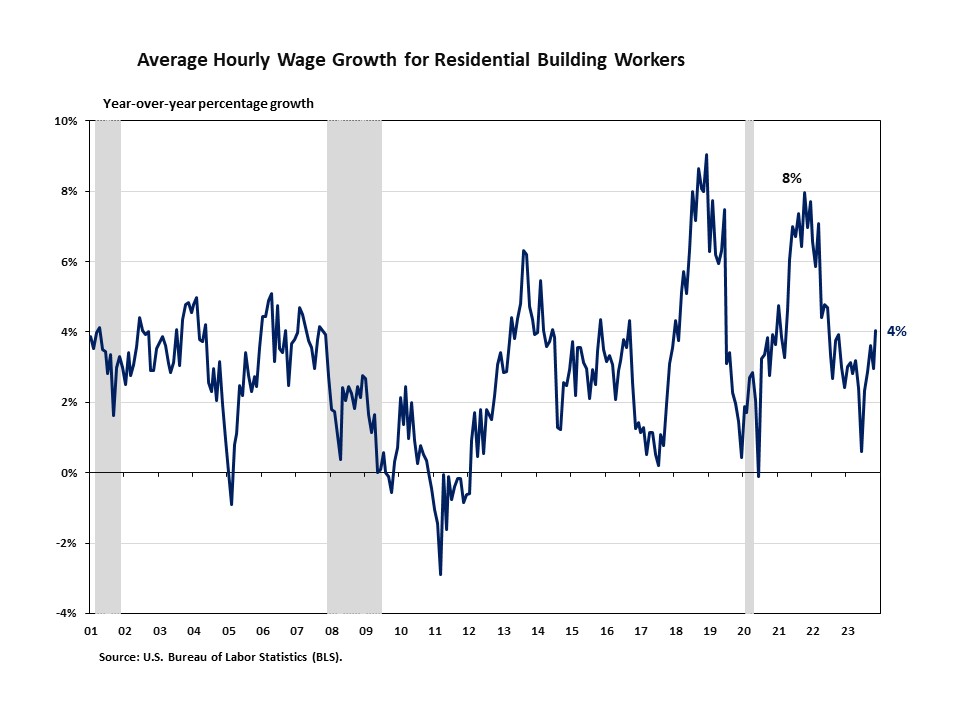The year-over-year (YOY) growth rate for residential building worker wages decelerated to 0.6% in June 2023. Over the past five months, wage growth accelerated moderately and reached 4.0% in November. Overall, average hourly earnings for residential building workers* increased at a relatively slower pace in the past year, compared to the peak rate of 8% in October 2021.
According to the Bureau of Labor Statistics (BLS) report, average hourly earnings (AHE) for residential building workers was $30.71 per hour in November 2023, increasing 4.0% from $29.52 per hour a year ago. This was 14.1% higher than the manufacturing’s average hourly earnings of $26.91 per hour, 8.9% higher than transportation and warehousing ($28.19 per hour), and 12.0% lower than mining and logging ($34.91 per hour).
Wage growth has been below 4.0% in the past twelve months. November’s acceleration in wage growth reflects an imbalance in the construction labor market. Demand for construction labor remained strong. Indeed, the construction labor market moved in the opposite direction of the overall economy. As mentioned in the latest JOLTS blog, the number of open construction jobs rose to 459,000 in November, as the count of total job openings for the economy declined to 8.8 million.

Note: * Data used in this post relate to production and nonsupervisory workers in the residential building industry. This group accounts for approximately two-thirds of the total employment of the residential building industry.

